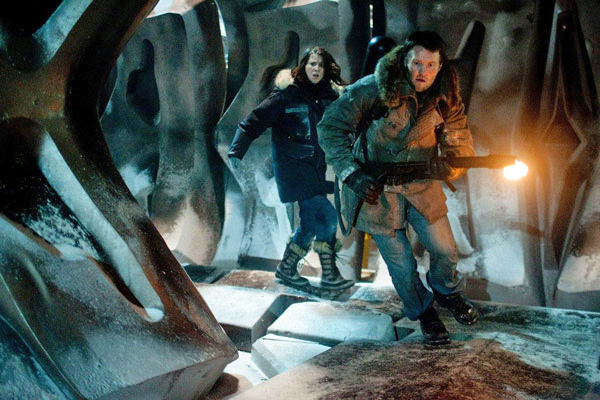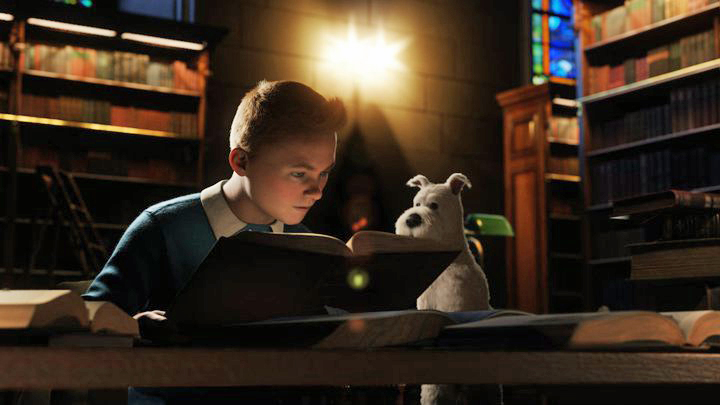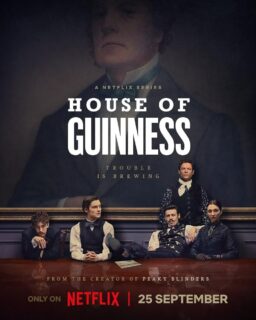Q. I have seen “Die Hard With a Vengeance” an embarrassing amount of times (not as many as “Die Hard” though) and I have never been able to spot Dick Cheney. He’s listed in the movie’s credits and it’s on his IMDb page. (Cory B. Wingerter)
A. It is said he “plays a cameo as an NYPD police official.” You know what? I seriously doubt it. My best guesses: (1) It was another Dick Cheney; (2) Somebody hacked IMDb.
Q. In your review of “Winter's Bone,” you wrote: “Ree’s travels in search of her father lead her to his brother, Teardrop (John Hawkes), whose existence inflicts a wound on the gift of being alive.” That last phrase, what the heck is that supposed to mean? (Mark Pool, Crown Point, IN)
A. Just some fancy writing. Roughly, “who is an insult to the human race.”
Q. I am concerned with the future of horror movies. I recently saw two fantastic, yet different films: “Orphan” and “Let the Right One In.” In “Orphan,” the film was filled with countless horror movie cliches. Why do so many movies, and more specifically horror movies, continue to use “the formula” and get away with it? I’m 32 and I know I’m outside of the demographic, but I know teenagers still cannot be truly happy with the same scenarios and gimmicks as you suggest in your review. I’ve been tired of these for years, yet I still find myself drawn to watch the movies even though I haven’t been scared since I was a teenager. In the film “Let the Right One In,” “the formula” wasn’t used as directly as in “Orphan,” but I think that’s because it was a foreign film. Now, I’m frustrated to hear that there will be a US remake of this one! Here we go again! So sad. (Samuel Mills, Woodstock, Georgia)
A. Of course you picked two good movies, one very good. In “Let the Right One In” Lina Leandersson was unforgettable as Eli, the vampire. The role is played in the remake (called “Let Me In“) by Chloe Moretz, who certainly displayed a lot of confidence in “Kick-Ass” and was good in “(500) Days of Summer.” It will be a test of the Hollywood remake to be as effective and chilling as the original. Will it dilute the truly disturbing implications of the story?
Q. What makes a movie a bad movie? Do you ever like a movie that the critics just dislike? In the era of “we’ve seen it all,” is it more difficult to make a movie that pleases both critics and audience? How about foreign movies? Are they likable because they’re foreign? (Alex Tho, Jakarta, Indonesia)
A. Yeah, I’ve been in the minority. There’s no checklist of what makes a movie bad, but one thing that bothers me is when it seems content to grab some quick profits from a marketing campaign and not really care about word-of-mouth. “The A-Team” was a “hit,” for example, before the word got around. It dropped off quickly, but not quickly enough to spare its victims.
Q. I wonder if you know what Douglas Pratt, the writer of DVD Laser newsletter, is up to lately. I was a big fan of his Laserdisc Newsletter in the 90s and thought he was, without question, one of the best reviewers of films and home video I have ever seen. But after the 90s, he seems to have vanished. His web site is now filled with broken links, and email sent to him is bounced. (Kevin Yip, New York, NY)
A. I agree with your high opinion. He is especially strong on the technical details of DVDs. You’ll fine him writing at moviecitynews.com
Q. I gobbled up your “Now on DVD” review of “Matinee” today, having seen the movie when it came out in 1993. It brought back fond memories of Mants (as if there are any other kind of Mant-related memories). But afterwards, I got sentimental. Is there still room for a guy “with a few bucks and a big imagination” to make a movie nowadays? Has your opinion changed since 1993? (Geoff Hayward, Wakefield, RI)
A. Ah, yes. Mants: Men-ant mutants. They were featured in the horror film that hustling producer John Goodman was self-distributing in that very funny comedy. Can something like that happen now? An indie director with a few bucks and an imagination can still sometimes hit the jackpot, as in “The Blair Witch Project” or “Paranormal Activity.” But a genuine sci-fi monster movie like “Mant” wouldn’t be low budget anymore, because the major studios have grabbed that market; their summer releases are often essentially circa-1965 American-International exploitation movies with big star and $200 million budget.
Q. I was a little surprised by how your review of “Toy Story 3” was largely dismissive of the film as a derivative sequel, stating it is “happier with action and jokes than with characters and emotions.” You say the first two films were about a boy and his toys, whereas this one leaves the toys to fend for themselves. On this point, I’d argue that there’s more Andy in this film than any before. The earlier films were all about getting back to the house and facing the dangers of highways, a deranged kid, and worse in the process. Andy was rarely seen in his entirety save a few moments at the beginning and the end. Here the film follows the usual formula, yes, (toys get lost, toys get into trouble, toys find their way back home) but there is a heartbreaking coda that allows Andy to have the spotlight for the first time in the series. These ending scenes were, for me, the most emotionally involving of the series and an excellent example of a franchise that works hard to make the sequel enrich and enhance what came before it. On the topic of 3D, however, I heartily agree. (Steven Avigliano, Rockaway NJ)
A. I have to be honest with you. I fully believe if I could see the film in 2D, my opinion would deepen and improve. I realize I’m in danger of sounding like an obsessive on his topic, but I find 3D an annoyance and a distraction, and the light in the screen in invariably dimmer than it should be. The so-called third dimension is getting between me and the heart of the story.












